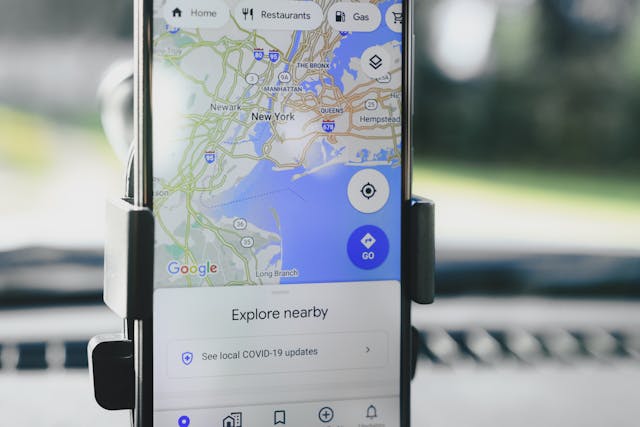When you are surfing the World Wide Web, your network configurations are always critical to your anonymity. Often, users encounter a frustrating error message: “It is quite telling, that Your Network Settings Prevent Content from Loading Privately” This message can prevent a connection to websites or apps, making him/her wonder why the message shows up and how it is addressed.
This article describes how and why this might happen and how to make sure your content loads securely and privately.
Introduction
Why such an error message as “Your network settings prevent content from loading privately” has recently become popular as concerns about privacy on the internet grow. This issue often leads to a network setting that can reveal your information as you browse or type content.
Experiencing this error also means that you cannot load some websites perfectly or even access them at all because the browser or app does not create a secure connection. This article focuses on why this error occurs, on how to approach a solution, and on how to preserve the privacy of one’s network settings.
Whether you are a casual Internet surfer or a technophobe, this information will help you better protect yourself and get acquainted with possible ways to get rid of the problem.
What Does “Your Network Settings Prevent Content from Loading Privately” Mean?
The message can come up when a network or device denies access to secure connections, and it reads “Your network settings prevent content from loading privately”. This means that your device can not make a direct connection with a site or an app server because of some network restraints. Overall, the main purpose of this error message is to inform the users that their privacy is in danger.
When this message appears, it can mean that:
- Your device is connecting to an unprotected or open Wi-Fi network.
- There are different VPNs or proxy settings.
- It may be that content filters or firewalls are limiting your capability to download.
With regards to these possible causes, you probably can proceed and work around to solidify your connection.
Why This Error Occurs
Several factors can contribute to this error message. Here are the most common reasons:
- Public Wi-Fi Networks: Surfing through certain connections, this message might appear for example in cafes or airports and the like because these networks do not have correct encryption.
- Misconfigured VPN or Proxy: VPNs or proxies assist in hiding your IP but incorrect settings in this case will interfere with the private browsing.
- Content Filters and Firewalls: To increase network security, various contents may be restricted in schools, offices, or by parents using software to filter the content. This blockage is the reason that the error can occur.
- Browser or App Privacy Settings: Specific settings of the browser or app used to access the site can be improper, causing an effect on secure loading.
- Expired Security Certificates: The SSL certificates, which have expired, can render sites non-functional, for the browser cannot confirm the site’s authenticity.
- Outdated Software or OS: At other times, running the operating system or browser that is no longer current can result in network security problems, and this error message is displayed.
Step-by-step fixes for “Your Network Settings Prevent Content from Loading Privately”
To resolve this issue, try the following steps:
1. Check Your Network Connection
Therefore, for the first step, find out if you are using a public or protected wireless broadband connection. If possible connect to a secured Wi-Fi changing your preferences to WPA2 or WPA3 encryptions to improve your privacy.
2. Update Your Browser and Operating System
The old software installed on the computer may cause problems with the compatibility of the networks. A lot of updates include security patches in their update notes so always make sure that your browser or the operating system on your device is updated.
3. Configure VPN or Proxy Settings
If you use a VPN or a proxy server, read the configuration of that service once again. At times, VPNs that use high encryption might be the main cause of the problem resulting in the displaying of the error message. Perhaps one should disable the VPN connection for an instance to check whether the problem abides or not.
4. Disable Content Filters and Firewalls Temporarily
If you’re receiving an error due to content filters or firewalls, just change them. In case you want to use it at offices and schools, then you require the help of the administrator to adjust the limitations.
5. Clear Browser Cache and Cookies
Occasionally, you can fix some network problems by erasing a browser’s cache and cookies. Stale connections can also port in syntax to the cached connectivity so a fresh connection may help.
- Open your browser’s settings.
- Go to Privacy & Security.
- Next, we must select Clear Browsing Data, and then we must check only Cached Images Files and Cookies.
- To clear your browsing experience, click on Clear Data.
6. Verify Security Certificates
If the security certificate of a website is expired or invalid then it may cause hindrance in private loading. Try to contact the site administrator or open another website to check if the problem is on the site only.
7. Restart Your Router
Sometimes network problems can be solved by restarting the router. Turn off the router and reconnect it after five minutes. This measure can eradicate connectivity issues and delete any random issues in the network settings as well.
Tips to Keep Your Network Settings Secure
Other privacy-related aspects can be minimized if secure network settings are kept appropriately. Here are some tips to keep in mind:
- Use Trusted VPN Services: Use a reliable VPN service to protect your connections and avoid this error.
- Regularly Update Security Software: It is recommended always to update your antivirus, firewalls, and all your security tools to help in their performance.
- Avoid Public Wi-Fi When Possible: Public networks are modes for your data to be accessed therefore avoid accessing sensitive data within these networks.
- Limit Permissions in Apps: Limit the permissions of the applications to avoid the high possibility of security confrontation.
Conclusion
When you know how this problem happens and how to solve it, you can protect your browsing experience from similar pitfalls. Many users have described this message as indicating a certain threat to their privacy based on various network settings or configurations. This is the reason it prevents intruders and hackers from accomplishing their malicious aims; therefore, to improve your connection, you need to update the software and check the VPN settings and security certificates.
Finally, it is remarkably clear that secure network settings are vital and that their preservation has the capability of providing the user with an optimized, secure experience online without the complication of privacy.



